Visit the Via Dolorosa in Jerusalem with A Tour Guide
VIA DOLOROSA IN JERUSALEM OLD CITY
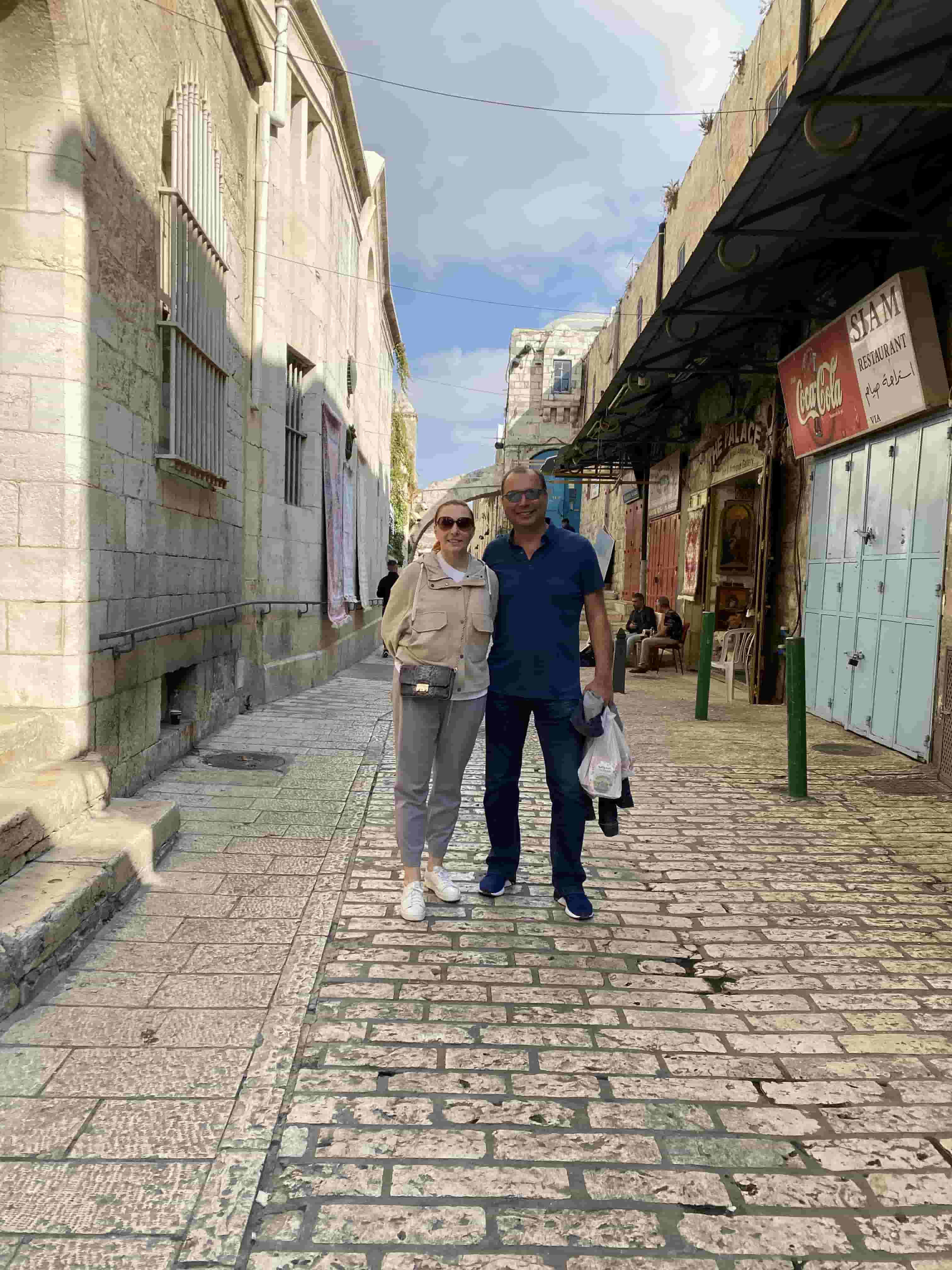
Via Dolorosa - the path of torment, is the way Jesus went from the place of trial to the place of crucifixion. There was not always a way of agony in today's route, and it was not always called the way of agony. The more acceptable name in the Byzantine period was the cross.
The fourth-century Pilgrim Agria wrote:
"They rise to the Mount of Olives to the cave where the Lord was with his apostles that day...Then go down to the Gethsemane and so the bishop follows from Gethsemane to the gate of the city and hence to the cross…"
Meaning that the way of the cross was through the Mount of Olives and Gethsemane (where Jesus was caught) through the Golden Gate ( entered the city when he arrived) and from there to the direct place of crucifixion.
Later in the Byzantine period, the cross included the temple of Great Cohen on Mount Zion, where Jesus was judged by the Sanhedrin, and the praetorium – the Procurator's house where Jesus was judged by Pontius Pilate. meaning, the road went from the Mount of Olives to the Gethsemane at the bottom of the mountain, from there to the House of Kipa at Mount Zion, and from there through the place of trial to the Golgotha Hill. At the site of the trial, a church called Santa Sophia (Holy Wisdom) was built. The place of the church is unknown, but the traveler from Bordeaux (333 C. E.) tells us about the place of trial when he describes away from the Zion Gate to the Nablus gate and so he wrote:
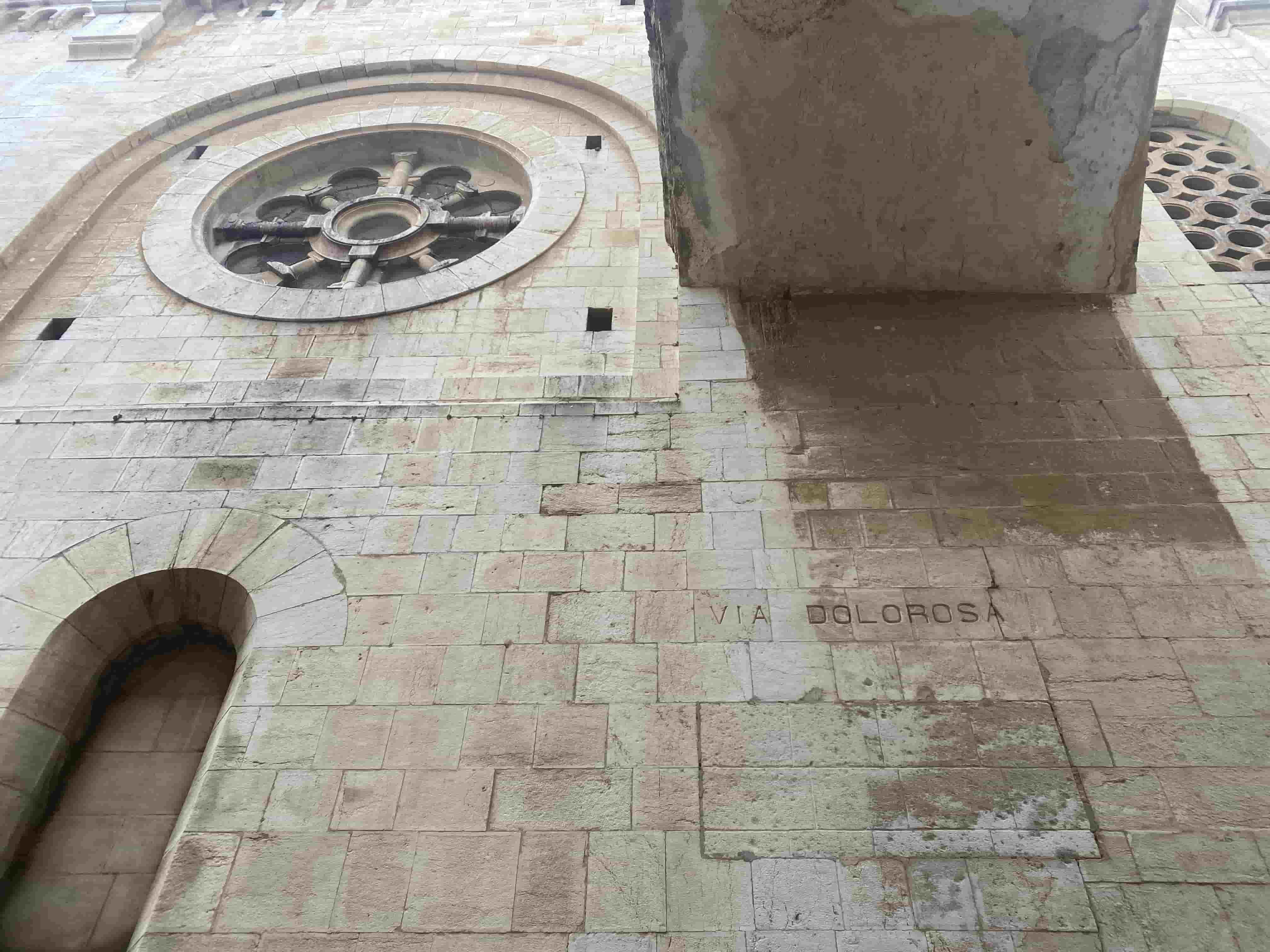
"From here you get out of the walls of Zion and you descend towards the gate of Nablus to the right, down in the valley there are walls that were once the praetorium of Pontius Pilate, here Jesus was judged before his suffering journey. On the left side, you see the small hill of the Golgotha on which our Lord was crucified...."
That is the Pilatus House and the Church of Santa Sophia built on it, we're in the ravine at the foot of the Temple Mount or its edges. The 6th–century media map marked the Santa Sophia church with two pages. The church is located in the Jewish Quarter of today to the north of the Nea Church which was discovered under the "shelter houses" in the Jewish Quarter.
The conclusion is that the path of the cross within the Old City passed in general from south to north from the landmark gate of the Jewish Quarter to the Golgotha Hill.
In 614 C.E., in the Persian invasion, the Church of Santa Sophia was destroyed and not rebuilt again.
In 638 C.E., Jerusalem was conquered by Muslims, and processions along the Cross Road became problematic and rare and were copied to today's Armenian Patriarchate Street. The place of the trial (praetorium) was identified as Mount Zion.
In 1099, the Crusaders arrived and Jerusalem became Catholic. And the Knight wrote from Würzburg (1165 C. E.):
"Our Lord was taken, after being betrayed, by a Roman soldier and brought to Mount Zion that then stood on him the praetorium or the court hall of Pilatus that was named in the name of the floorboard (altostratus) or Hebrew Gabata…"
That is the place of trial at Mount Zion and the processions probably passed in the same way as in the Muslim period.
In 1172, a knightly scholar named Theodoric wrote under the influence of the writings of Josephus that the House of Pilate was in the Antonia fortress in the northeast corner of the Temple Mount and even a small chapel was built there.
There is no doubt that the great push for identification through the Cross is through the torments on the current route given to the Franciscan monks. These came to Jerusalem in the 14th century and received from the pope the right to keep the holy places in the name of the Catholic Church. They advocated religious conquests, and in this context, they sought to sanctify various sites, bring pilgrims to them, and thus bring a physical Catholic Christian presence to these sites. The Franciscans began to consecrate the path of torment that came out of the place of trial – the praetorium on the hill of Antonia to the place of crucifixion. Today the Way of Torment contains 14 stations, but these have formed over the years and are not always their number 14. The Ottomans did not allow ritual ceremonies near the stations but in Europe began the worship of the stations. At the end of the 17th century, with the encouragement of Pope Inocantius the 11th, photos of the Franciscan church stations in Europe were hung and later in the other Catholic churches on the orders of Pope Clemens the 12th. The same pope also determined the number of stations definitively to 14.
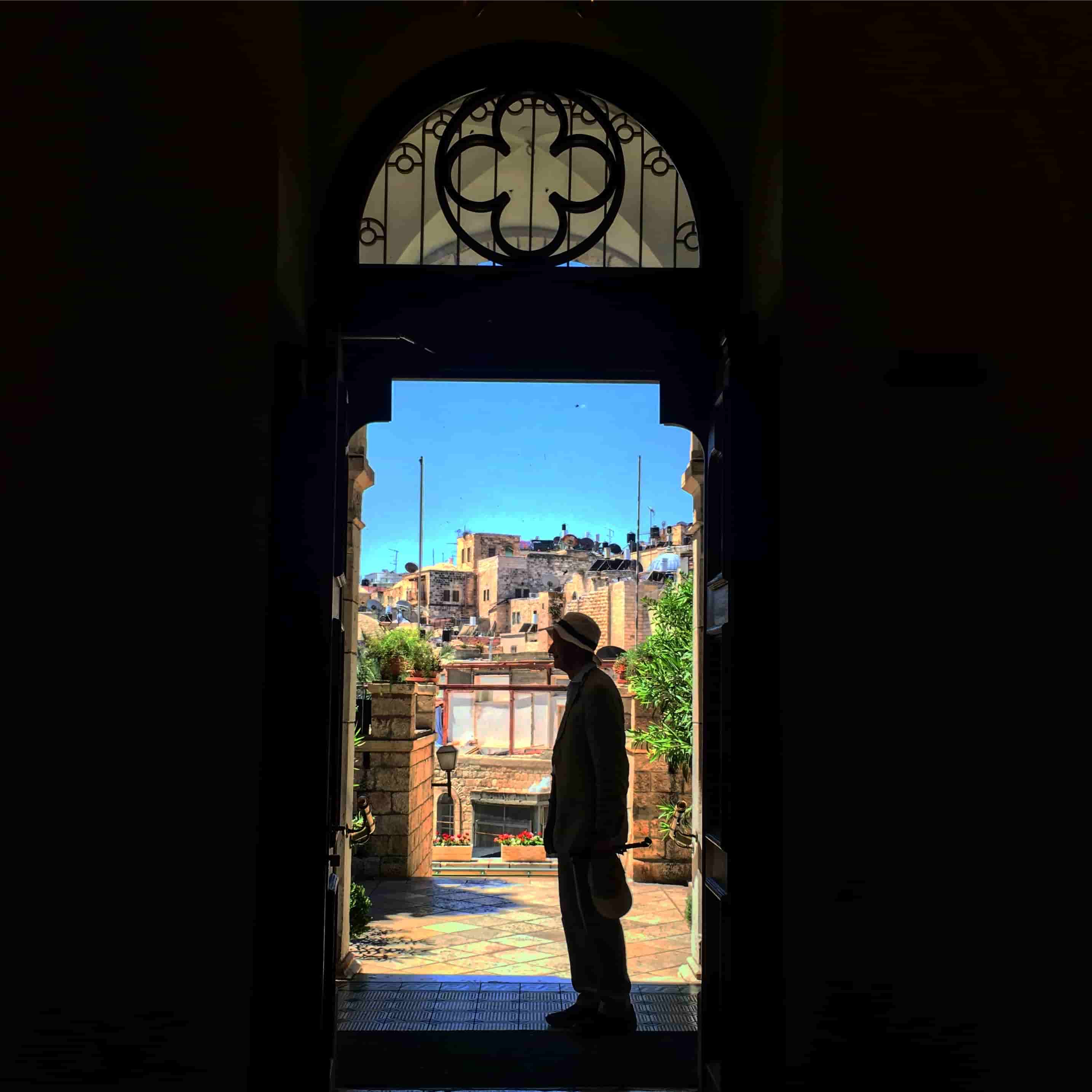
Pilgrims from all over the world come today to Via Dolorosa and restore the way of Christ's torment on their subject a symbolic cross on their shoulders. Near the various stations, they stop, say things, pray, and move to the next station. Not all stations indicate events mentioned in the New Testament, and some indicate late traditions.
The stations in the past were marked by columns that did not all survive. Today, most of the stations outside the Church of The Holy Sepulcher have a metal circle on which the station digit is embedded. Most stations have chapels but not all.
THE STATIONS OF VIA DOLOROSA IN JERUSALEM
1. The Praetorium – the place of trial in Antonia-is now a school of Omaria.
The Gospel of Matthew Chapter 27, 11-14
"And Jesus was blinded before hegemony. Meanwhile, Jesus stood before the governor, and the governor asked him, “Are you the king of the Jews?”You have said so,” Jesus replied. When he was accused by the chief priests and the elders, he did not answer. Then Pilate asked him, “Don’t you hear the testimony they are bringing against you?” But Jesus made no reply, not even to a single charge—to the great amazement of the governor.
2. The flagellation church and the Church of the Franciscan compound cross spoon in front of the Antonia.
The Gospel of John 19, 1-5
Then Pilate took Jesus and had him flogged. The soldiers twisted together a crown of thorns and put it on his head. They clothed him in a purple robe and went up to him again and again, saying, “Hail, king of the Jews!” And they slapped him in the face. Once more Pilate came out and said to the Jews gathered there, “Look, I am bringing him out to you to let you know that I find no basis for a charge against him.” When Jesus came out wearing the crown of thorns and the purple robe, Pilate said to them, “Here is the man!”
3. The first fall, at the intersection of the Gay and Dolorosa streets, in the possession of Armenians-Catholics. In the Ottoman period, a bathhouse was in place. The station is not mentioned in the scriptures.
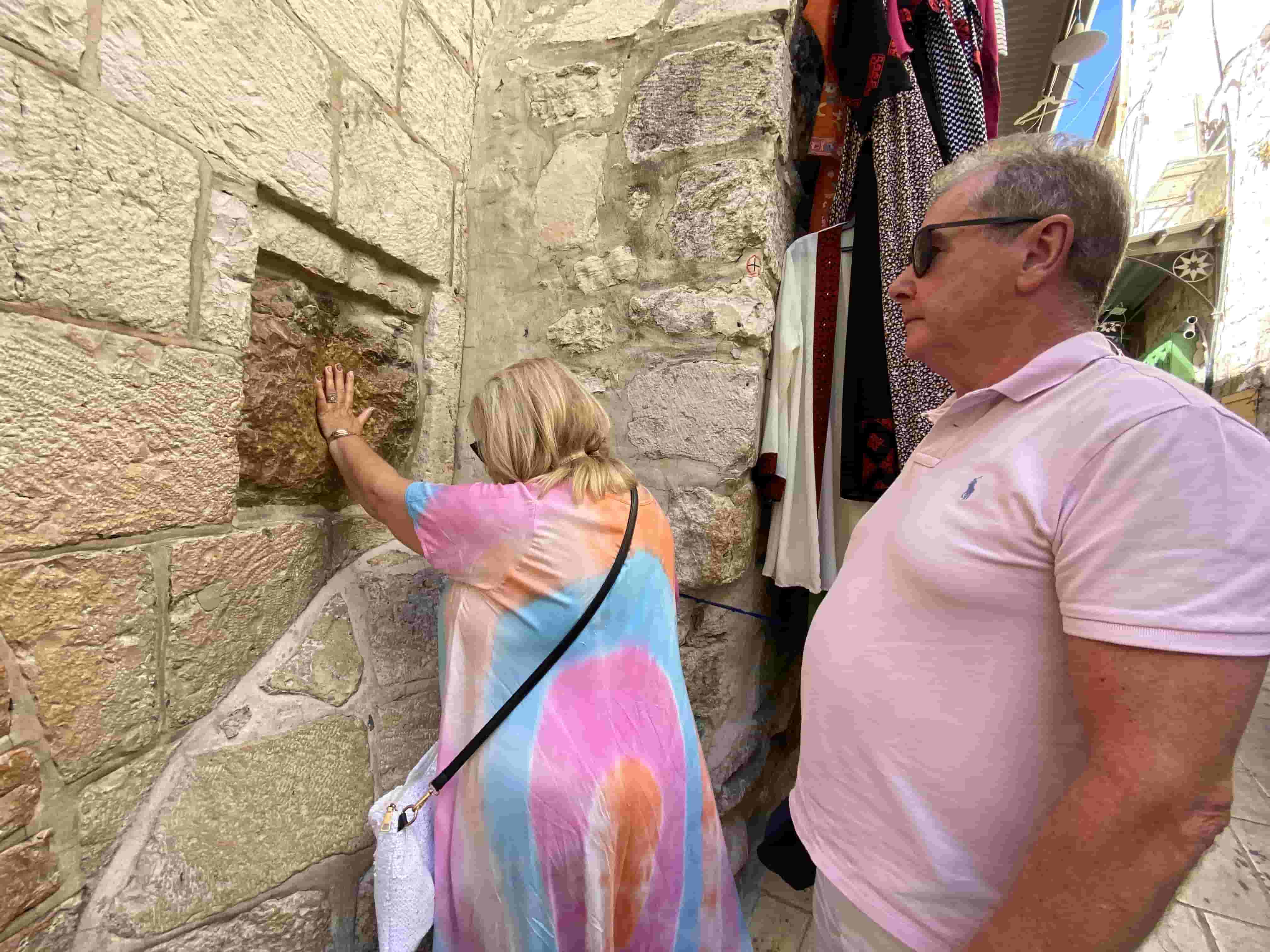
4. The meeting of Jesus with his mother Mary, at the intersection of Gay and Via Dolorosa (East) streets, is in the possession of the Armenians-Catholics in the Crypt of the Church of the "Dueling Lady". The station is not mentioned in the scriptures.
5. Simeon of Cyrene helped Jesus to carry the cross, at the intersection of Gay and Via Dolorosa (West) streets.
The Gospel of Luke Chapter 27,32
"And when he was blessed with the name of the Lord, He shall hold him with the man of the one who came from the field, and he shall keep the man of the wall, and he shall put him on the cross to bear the other."
6. Veronica wipes the face of Christ and the image of his portrait is imprinted on the kerchief, is on Via Dolorosa Street, in the property of the Greeks-Catholics, the station is not mentioned in the scriptures.
7. The gate of judgment and the second fall, the station, and the chapel are in the place of the gate from which Jesus was taken out of the city to the cross. The gate is on the second wall of the second temple times. The third wall did not exist yet. The site is located at the intersection of streets: Via Dolorosa and Beit Habad. At the Franciscan authority. The site does not appear in the scriptures.
8. Jesus meets the daughters of Jerusalem on Hanaka Street. A stone wall showing a cross on the crucifixion Hill and an inscription - "Jesus Christ wins" (IC XC NIKA).
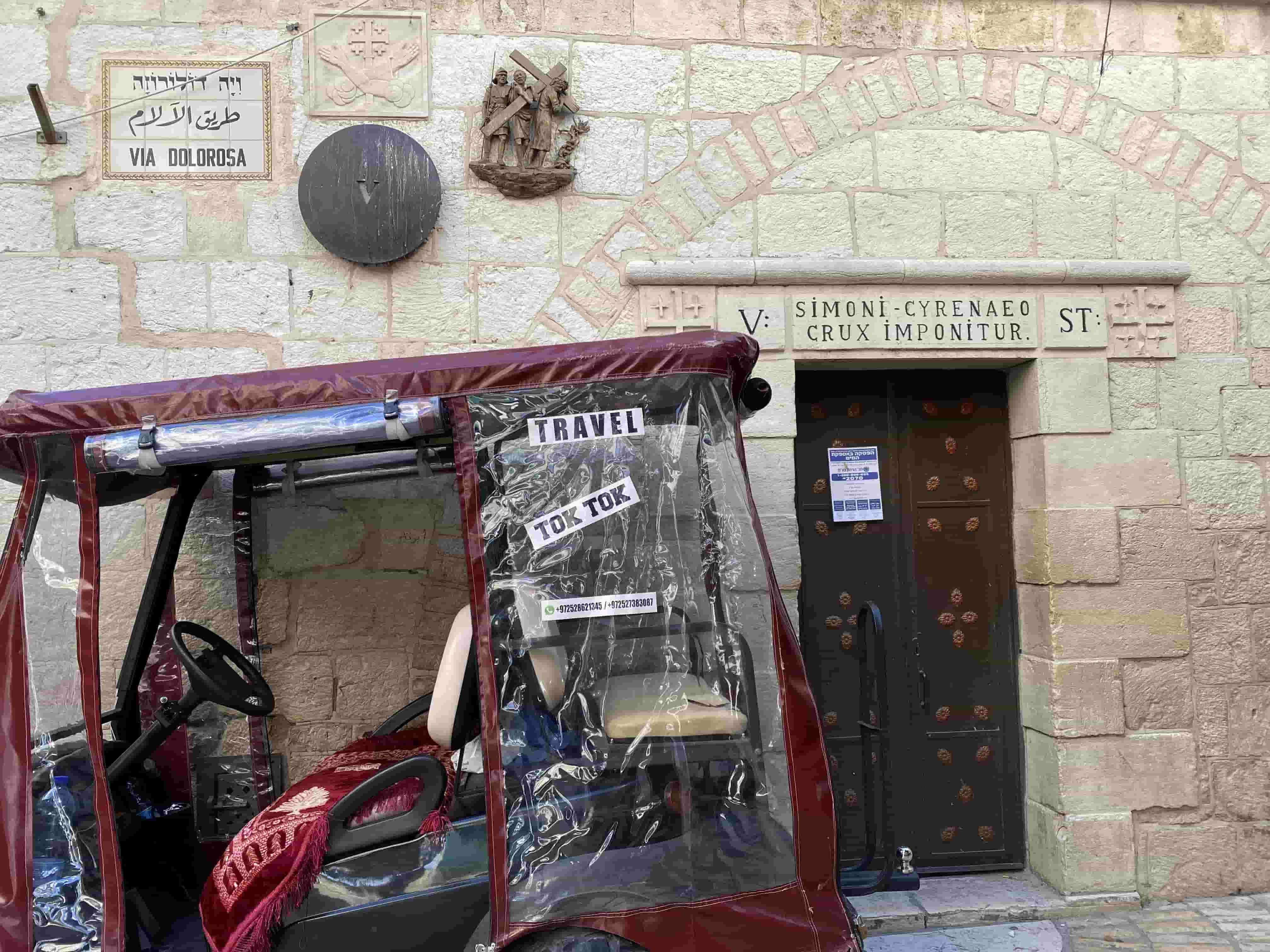
9. The third fall, which is at the entrance to the roof of the Church of the holy sepulcher near the Ethiopian complex, this station has a dispute between the Copts and Russians and is marked on the page only. The site does not appear in the scriptures.
10. The division of clothing, is at the entrance to the Church of the holy sepulcher to the right up the stairs, held by the Franciscans. In the Crusader period, the chapel was called the"Chapel of the Franks".
The Gospel of Luke Chapter 27,35-36
When they had crucified him, they divided up his clothes by casting lots.And sitting down, they kept watching over him there. Above his head they placed the written charge against him: this is Jesus, the king of the Jews.
11. Jesus Nailed to the cross, inside the Church of the Holy Sepulcher on the Golgotha in the right Chapel, in the possession of the Franciscans.
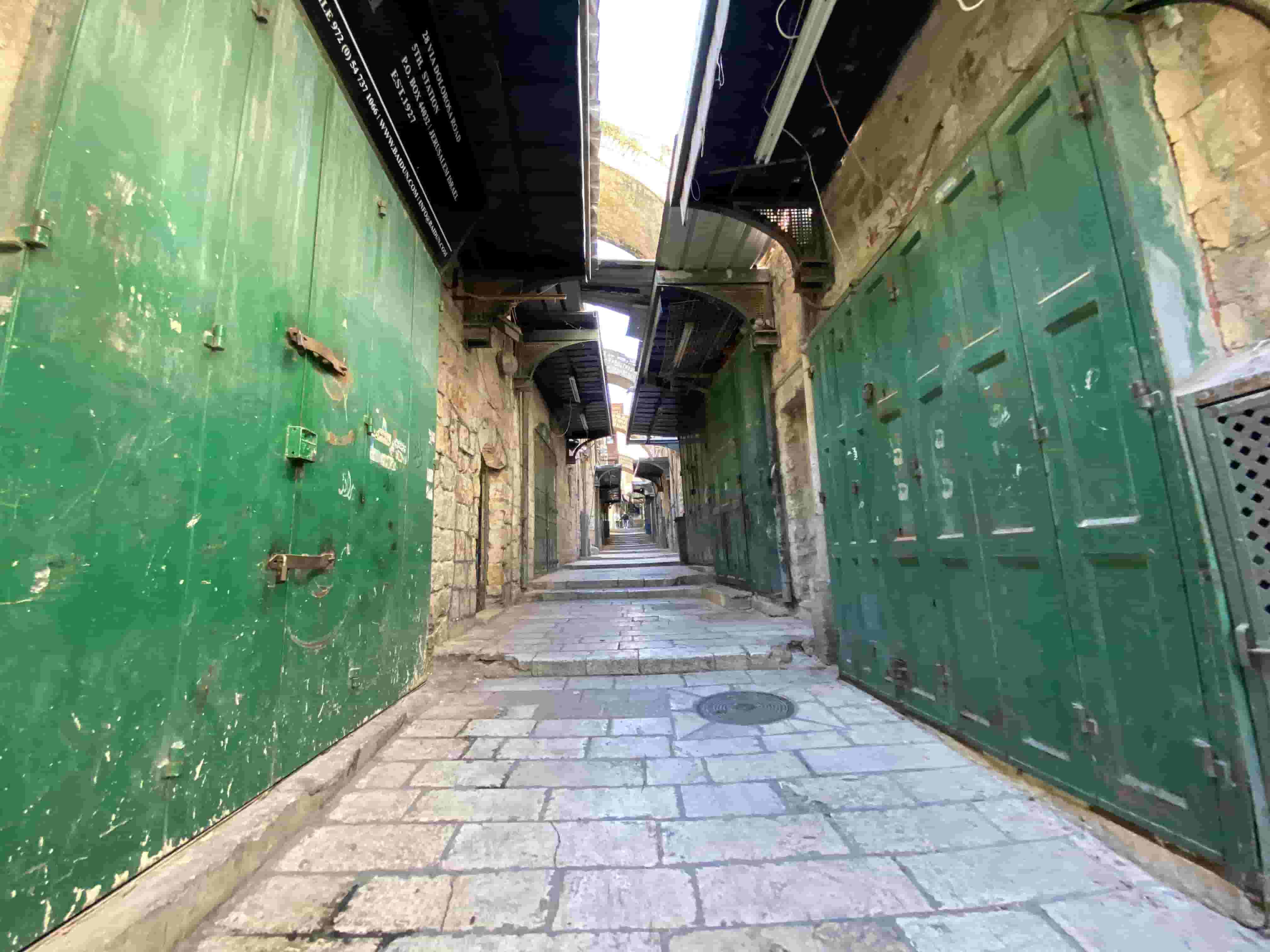
12. The Crucifixion, located in the Church of the Holy Sepulcher on the Golgotha in the left Chapel, in the possession of the Greeks-Orthodox.
The Gospel of Mattew Chapter 27,45-46
From noon until three in the afternoon darkness came over all the land. At about three in the afternoon, Jesus cried out in a loud voice, “Eli, Eli, Lema Sabachthani?” (which means “My God, my God, why have you forsaken me?”).
13. Jesus is taken down from the cross. Located in the Church of the Holy Sepulcher accepted by the Franciscans, Greek Orthodox, and Armenians, the unction stone at the entrance to the church is the thirteenth station. On this stone, Christ was anointed by the Jewish tradition and wrapped in a shroud.
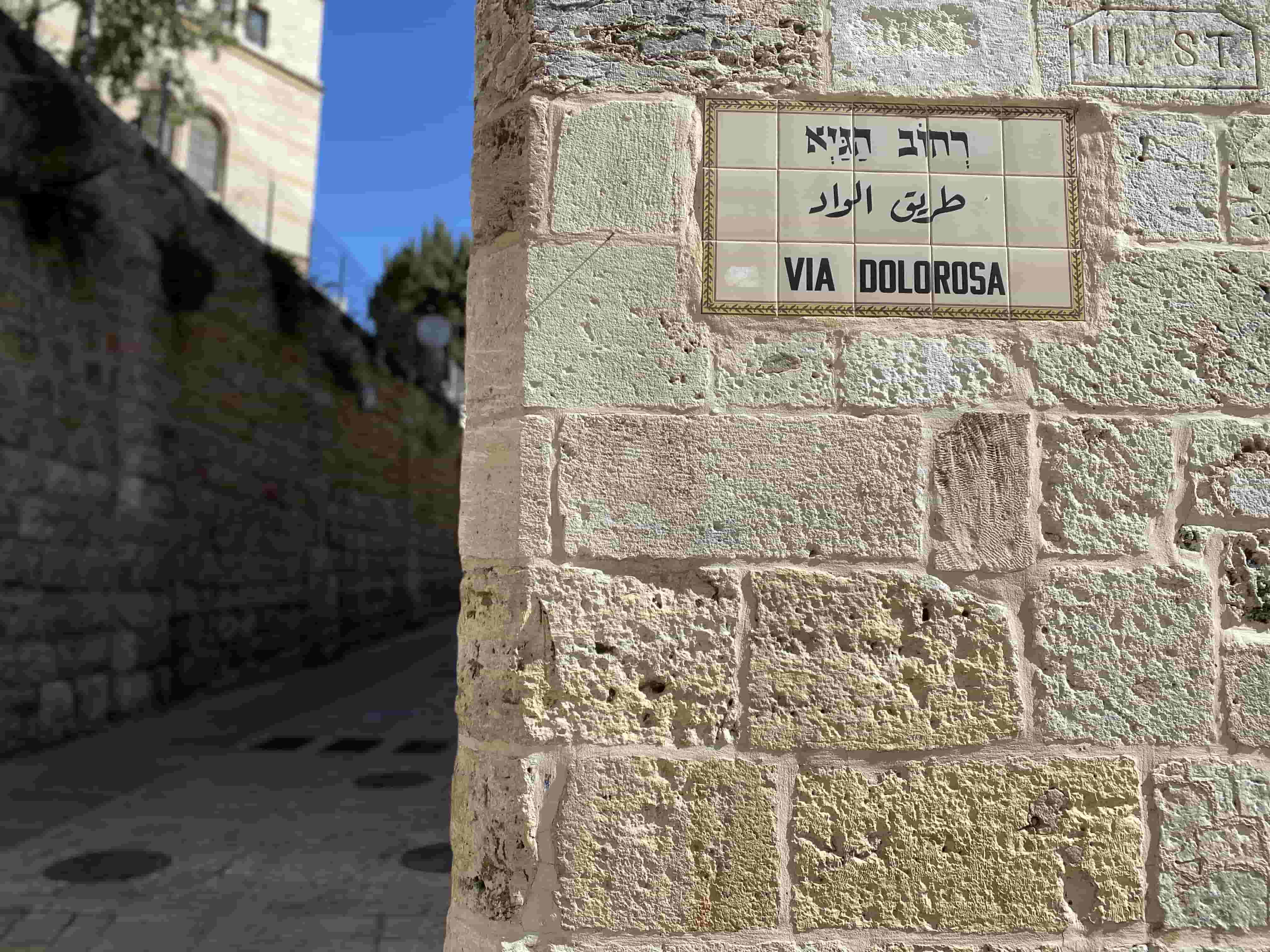
14. The tomb and the resurrection are in the center of the Rotunda in the Church of the holy sepulcher with the Common authority of the Armenians, Copts, Franciscans, and Greeks. At the 14th station, there are two chapels: at the entrance – the chapel of the angel that heralds that Christ rose from the dead, and after it the chapel of the grave itself.
The Gospel of Mattew Chapter 27,57-61
As evening approached, there came a rich man from Arimathea, named Joseph, who had himself become a disciple of Jesus. Going to Pilate, he asked for Jesus’ body, and Pilate ordered that it be given to him. Joseph took the body, wrapped it in a clean linen cloth, and placed it in the new tomb that he had cut out of the rock. He rolled a big stone in front of the entrance to the tomb and went away. Mary Magdalene and the other Mary were sitting there opposite the tomb.
Visiting the Via Dolorosa in Jerusalem is possible every day, the best option is to take the Christian Jerusalem guided tour to fully explore this important location
You may also be interested in :
1. Christian Holy Land Israel Tour.
ORDER NOW!
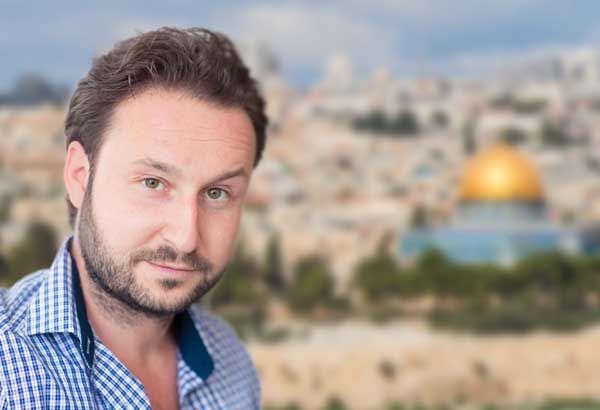
SLAVA BAZARSKY
PHONE: +972 53 4779797
Tours in Israel
- 11 Days Jewish Heritage Tour through Israel
- 3-Day Jewish Heritage Tour of Israel: Unveiling the Rich Tapestry
- 5 Days Jewish Heritage Tour to Israel: A Journey Through History and Spirituality
- 7 Day Jewish Heritage Tour to Israel: A Holistic Journey
- 9-Day Jewish Heritage Tour Through Israel
- Christian Holy Land Guided Tour of Israel 2024
- Classic Guided Israel Tour
- ISRAEL: OFFICIAL TOURING ENTRY FOR FAMILIES, SMALL GROUPS COVID 19
- Jewish Heritage Guided Tour
Daily Tours in Israel
- Jerusalem And Bethlehem Private Tour From Tel Aviv
- BATTLE LEGACY TOUR
- Best 3-Day Negev Jeep Tour - Mystery of The Israeli Desert
- Best Eilat to Petra 1 Day Private Tour
- BETHLEHEM AND JERICHO TOUR
- CAESAREA, HAIFA, AND ACRE PRIVATE GUIDED TOUR FROM TEL AVIV
- CALIBER 3 GUSH ETZION - ULTIMATE ISRAELI MILITARY ADVENTURE
- CHRISTIAN GALILEE TOUR
- CHRISTIAN JERUSALEM TOUR
- CITY OF DAVID AND UNDERGROUND JERUSALEM TOUR
- CLASSIC PRIVATE JERUSALEM TOUR
- Dead Sea Relaxation Day Tour
- Following October 7th Massacre - Gaza Envelope Private Tour
- HAIFA, AKKO AND ROSH-HANIKRA TOUR
- Jerusalem Rooftops And Walls Private Tour: History From A Different Angle
- JORDAN RIVER BAPTISM SITE TOUR
- JUDEAN DESERT AREA TOUR
- Levinsky Market Ultimate Tasting Private Tour
- Private Vip Tour Of The Israel Diamond Exchange Center in Ramat Gan
- RAMAT GAN SAFARI PARK TOUR
- SAFED AND GOLAN HEIGHTS TOUR
- TEL AVIV AND JAFFA PRIVATE TOUR
- Unforgettable Dead Sea and Masada Private Guided Tour
